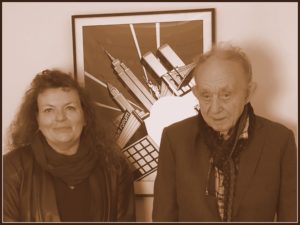Diversity in Film at Producers Guild of America’s Produced By: New York Conference
Click to tweet this article to your friends and followers!
At the recent Producers Guild of America’s Produced By: New York conference held at the Time Warner building in Manhattan, producing and collaboration panels emphasized the continued need for diversity, both in hiring and onscreen representation, as well as writing and filmmaking in this current political climate.
Here are some highlights from the Producing Masterclass events.
Mary Poppins Returns
Director Rob Marshall and star Emily Blunt discussed their upcoming film Mary Poppins Returns (they previously collaborated on Into the Woods). Blunt stated, “It’s a divisive time. Here’s a film that could be a great unifier. This is what the world needs. You can feel the acrimony and the bitterness, and here’s the opportunity for hope to reappear literally from the skies.”
Marshall said he chose to set the film during the Great Depression because of the parallels between that era of economic instability and our present social climate. “It’s a message of hope in a very dark time, which is what I feel we’re in these days.”
They also remarked on their trepidation about remaking the classic 1964 Mary Poppins and Blunt’s concern about playing the role made famous by Julie Andrews, recounting a talk she had with a friend who encouraged her to take the role: “Dude, you’ve got balls of steel.” Blunt added: “It’s the most delicious character I’ve ever played.”
BlacKkKlansman
Director Spike Lee’s BlacKkKlansman documents the 1970s police’s infiltration of the Ku Klux Klan and closes with images of the 2017 Charlottesville Virginia riots. Producer Jason Blum remarked, “To me, the message of BlacKkKlansman, which I tell people when they’ve asked me, is very simple: Racism is stupid, and people who are racist are stupid, and people in the KKK are stupid racists, period. That’s what the movie is about.”
The film’s co-screenwriter, Kevin Willmott added, “You would think we wouldn’t have to say that!” Willmott continued, “It’s a really historic time we’re living in. People will look back and say, wow that’s when it happened, that’s when it was either going to go to hell or come back. We tried to…make something humorous that’s not funny. With hate, you have to get as close to the hate as you can and by doing that, you reveal the absurdity. That’s where the humor lies.” Regarding the hatred instigated by KKK Leader David Duke in the film, Willmott said, “That kind of hate has become part of the mainstream and it’s in the White House. It’s bizarre—if we had tried to write this, people would have said you can’t expect us to buy this crap. And yet it’s happened.”
Can You Ever Forgive Me?
The film Can You Ever Forgive Me? chronicles the true story of Lee Israel (Melissa McCarthy), the writer and literary forger, and her accomplice and friend Jack Hock (Richard E. Grant). Producer Anne Carey and director Marielle Heller revealed the importance of the two main characters’ final meeting (Spoiler Alert).
Carey: “Hock didn’t really have an ending, it was only about Israel’s ending. One of the beautiful things that Mari (director Heller) did was give them a weighted moment. It was in the book actually—that line in the book, it says, ‘I saw you and I felt like I wanted to fucking trip you.’ That was a line in the book that hadn’t been in the script and Mari read the book and brought that line right back and gave them that scene.”
Heller stated: “I wanted to set it in the context of the AIDS crisis in New York, because the truth of the matter was that wasn’t part of the story so much when I came on board, but it was the truth of what these characters were living in. It was 1991 in New York. He was a gay man. The real Jack Hock died of AIDS, so it was important for me that that wasn’t something we were softening or skating over for the sake of telling an entertaining story.” Heller said at her first meeting with Searchlight: “This is the most important thing to me that we bring in—the reality of the context of who these people are and where they’re living.”
Roma
The timely themes of Alfonso Cuarón’s semi-autobiographical film Roma about life in Mexico City in the early 1970s, were addressed by producer Gabriela Rodriguez and star Yalitza Asparico. Rodriguez said: “Our movie speaks to class diversity and ethnic diversity and strong women characters lead the story.”
Crazy Rich Asians
Often referred to as a cultural phenomenon, Crazy Rich Asians is one of the only major studio films to feature a predominantly Asian cast. Star Ronny Chieng contributed his hilarious insights into the film’s success: “It’s about time we had a movie about rich people. Their stories are under-told. They’re 1% of the population but represent 99% of the power.”
Learn more about the event here.













